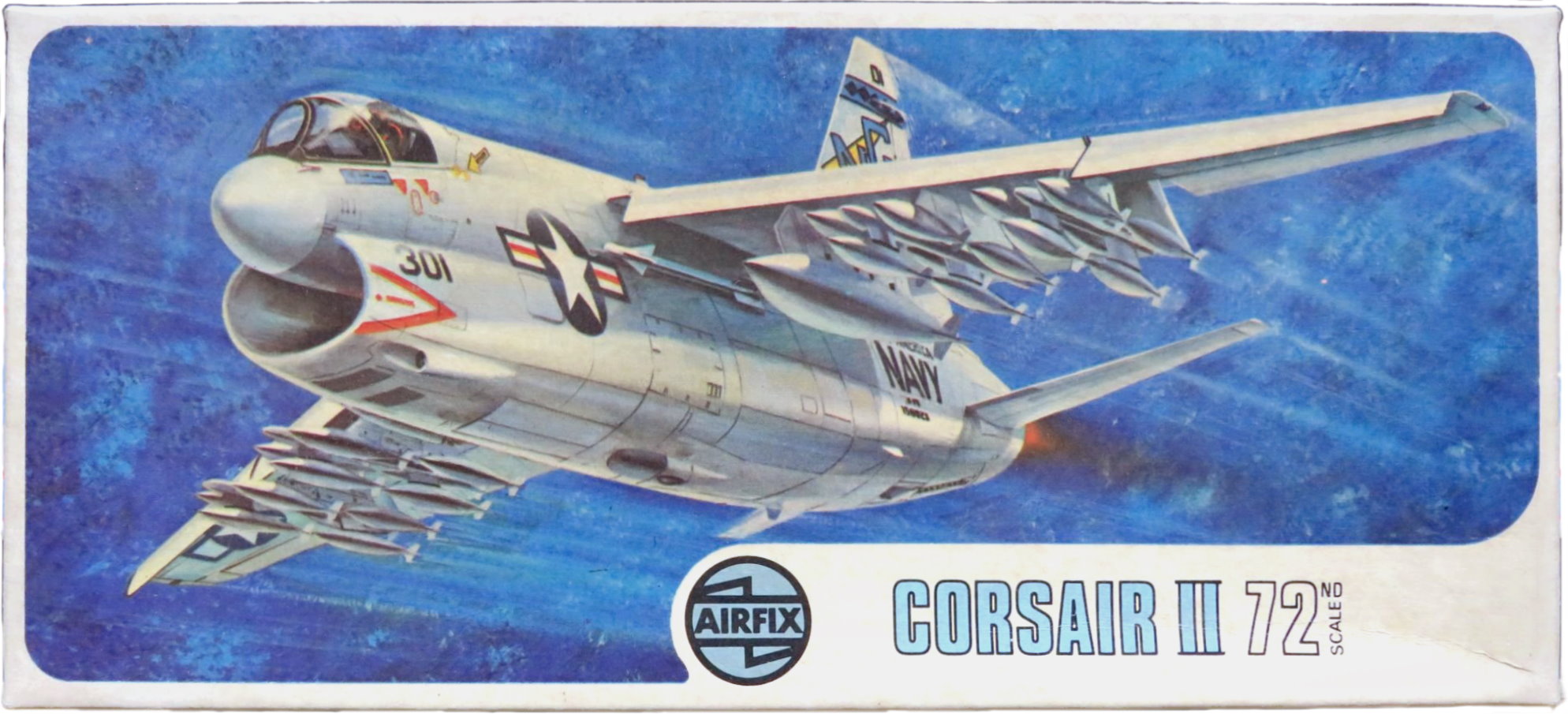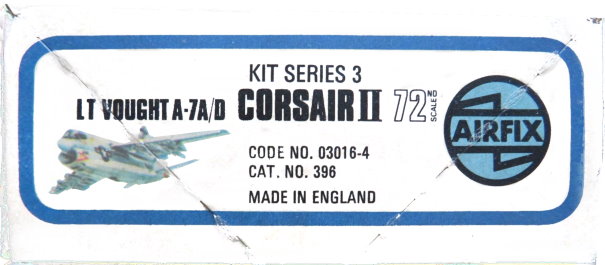Ling-Temco-Vought A-7A Corsair II
| F260 | 1968-1973 | G1(O) | 140000 | 2xUSN |
Ex-Hasegawa.
FROG model aircraft 1932-1976, R. Lines, L. Hellstrom
|
|
Frog have also announced that they will be releasing a series of jet fighter kits during 1968, and on show were the F-4K Phantom, F-104 Starfighter and A-7A Corsair II. All featured alternative transfers and looked most attractive. Release of this series will start in the Spring.
The IPMS magazine, Vol.5 No.3, MARCH 1968
MODELLING
W R MATTHEWS
A TRIO FROM FROG
Frog kits at their best are very good indeed, and the best of this month's three 1/72nd scale releases from this company, the Blackburn Shark, is a superb kit in the world-beating class of Airfix's 'Trimotor'. The value that it offers for its modest UK price of 3s 11d is astounding—it comprises no fewer than 98 component parts! Sharks were operated from both wheels and floats, and both are offered with this kit. Like those of most Naval aircraft, the wings of the Shark folded, so Frog has provided alternative centre sections permitting the wings to be fitted in either position. The ailerons, elevators, and even the slots are separate movable parts, and a selection of bombs and a torpedo are included. The model is extremely neat and possesses a wealth of detail. The component parts fit together well, although some care is understandably necessary during assembly. The decal sheet, which provides four alternative sets of markings, including those of a Portuguese Air Force aircraft, is outstanding, being beautifully printed and semi-matt finished.
It would be surprising if there were not one or two minor points for criticism. One of these is that, owing to the design of the alternative centre sections, there is an ugly triangular gap below the trailing edges of the upper and lower wings when these are fitted in the extended position. The operating mechanism of the elevators is unsatisfactory, and the elevators are, in fact, better cemented in position.
Frog's other offerings comprise an A-7A Corsair II and a Northrop F-5A. Both are good kits, though not up to the standard of the previously-described Shark. Both are generally accurate, although the nose cone of the A-7A is too blunt, and both are finely if sparsely detailed. The fit of the component parts is good, but both models need a considerable amount of fitting and filling at the joints, the fin of the F-5A and the wing roots of the A-7A demanding particular attention in this respect. Perhaps the best feature of either kit is its decal sheet. That for the A-7A provides the colourful markings of two USN attack squadrons, while that of the F-5A offers the markings of an F-5A(G)-NO-25 of the Royal Norwegian Air Force, and out-of-date markings for a Canadian Armed Forces CF-5A (the Canadian roundel is now red and white only, the blue outer ring having now given place to a red outer ring). At UK prices of 3s 11d and 6s 6d, these kits are fair value, though neither can be considered cheap, and this is particularly so in the case of the A-7A, despite the formidable array of underwing stores.
NEW KITS (latest review copies received)
| MAKE | AIRCRAFT | SCALE | PRICE |
| Frog | Blackburn Shark | 1/72nd | 3s 11d(UK) |
| Frog | Northrop F-5A | 1/72nd | 3s 11d(UK) |
| Frog | LTV A-7A Corsair II | 1/72nd | 6s 6d(UK) |
RAF Flying Review June, 1968, Vol. 23, No. 10
***
|






